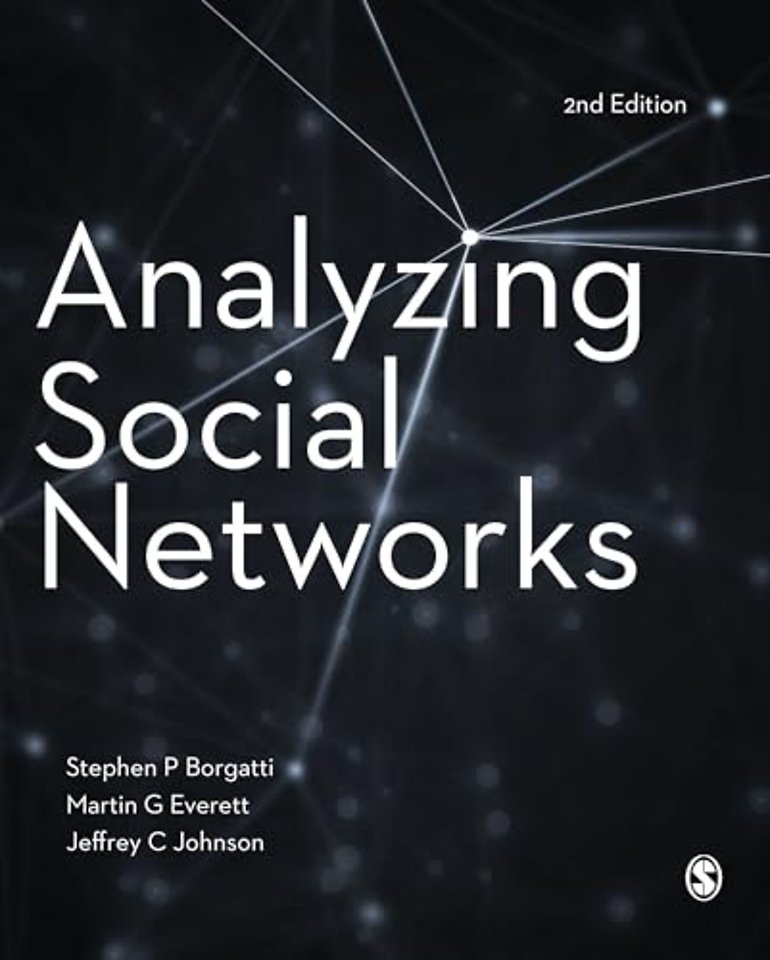Analyzing Social Networks
Samenvatting
Designed to walk beginners through core aspects of collecting, visualizing, analyzing, and interpreting social network data, this book will get you up-to-speed on the theory and skills you need to conduct social network analysis. Using simple language and equations, the authors provide expert, clear insight into every step of the research process-including basic maths principles-without making assumptions about what you know. With a particular focus on NetDraw and UCINET, the book introduces relevant software tools step-by-step in an easy to follow way.
In addition to the fundamentals of network analysis and the research process, this new Second Edition focuses on:Digital data and social networks like TwitterStatistical models to use in SNA, like QAP and ERGMThe structure and centrality of networksMethods for cohesive subgroups/community detectionSupported by new chapter exercises, a glossary, and a fully updated companion website, this text is the perfect student-friendly introduction to social network analysis.
Specificaties
Inhoudsopgave
Why networks?
What are networks?
Types of relations
Goals of analysis
Network variables as explanatory variables
Network variables as outcome variables
Chapter 2: Mathematical Foundations
Graphs
Paths and components
Adjacency matrices
Ways and modes
Matrix products
Chapter 3: Research Design
Experiments and field studies
Whole-network and personal-network research designs
Sources of network data
Types of nodes and types of ties
Actor attributes
Sampling and bounding
Sources of data reliability and validity issues
Ethical considerations
Chapter 4: Data Collection
Network questions
Question formats
Interviewee burden
Data collection and reliability
Archival data collection
Data from electronic sources
Chapter 5: Data Management
Data import
Cleaning network data
Data transformation
Normalization
Cognitive social structure data
Matching attributes and networks
Converting attributes to matrices
Data export
Chapter 6: Multivariate Techniques Used in Network Analysis
Multidimensional scaling
Correspondence analysis
Hierarchical clustering
Chapter 7: Visualization
Layout
Embedding node attributes
Node filtering
Ego networks
Embedding tie characteristics
Visualizing network change
Exporting visualizations
Closing comments
Chapter 8: Testing Hypotheses
Permutation tests
Dyadic hypotheses
Mixed dyadic–monadic hypotheses
Node level hypotheses
Whole-network hypotheses
Exponential random graph models
Stochastic actor-oriented models (SAOMs)
Chapter 9: Characterizing Whole Networks
Cohesion
Reciprocity
Transitivity and the clustering coefficient
Triad census
Centralization and core–periphery indices
Chapter 10: Centrality
Basic concept
Undirected, non-valued networks
Directed, non-valued networks
Valued networks
Negative tie networks
Chapter 11: Subgroups
Cliques
Girvan–Newman algorithm
Factions and modularity optimization
Directed and valued data
Computational considerations
Performing a cohesive subgraph analysis
Supplementary material
Chapter 12: Equivalence
Structural equivalence
Profile similarity
Blockmodels
The direct method
Regular equivalence
The REGE algorithm
Core–periphery models
Chapter 13: Analyzing Two-mode Data
Converting to one-mode data
Converting valued two-mode matrices to one-mode
Bipartite networks
Cohesive subgroups and community detection
Core–periphery models
Equivalence
Chapter 14: Large Networks
Reducing the size of the problem
Choosing appropriate methods
Sampling
Small-world and scale-free networks
Chapter 15: Ego Networks
Personal-network data collection
Analyzing ego network data
Example 1 of an ego network study
Example 2 of an ego network study
Anderen die dit boek kochten, kochten ook
Net verschenen
Rubrieken
- aanbestedingsrecht
- aansprakelijkheids- en verzekeringsrecht
- accountancy
- algemeen juridisch
- arbeidsrecht
- bank- en effectenrecht
- bestuursrecht
- bouwrecht
- burgerlijk recht en procesrecht
- europees-internationaal recht
- fiscaal recht
- gezondheidsrecht
- insolventierecht
- intellectuele eigendom en ict-recht
- management
- mens en maatschappij
- milieu- en omgevingsrecht
- notarieel recht
- ondernemingsrecht
- pensioenrecht
- personen- en familierecht
- sociale zekerheidsrecht
- staatsrecht
- strafrecht en criminologie
- vastgoed- en huurrecht
- vreemdelingenrecht







